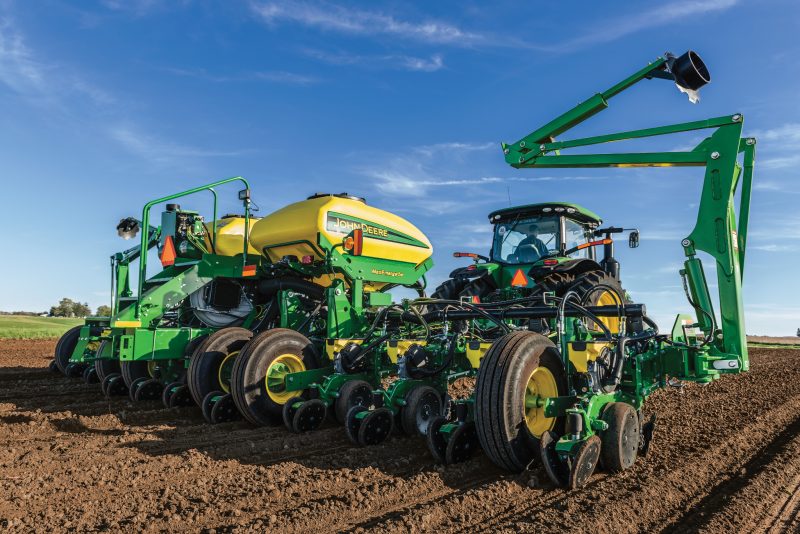Ag Innovations
"Practical application of knowledge - I don 't know about you but that sounds like agriculture to me." This year the Foundation is focusing on celebrating Ag Innovations! Read this inspiring speech made by Beverly Flores, North American Media Relations and Communications Manager for John Deere, made at the 2018 Flapjack breakfast.

By: Beverly Flores, North American Media Relations and Communications Manager for John Deere
Innovation and technology: Common words in today’s world - applied to many things and many industries. In fact it would be difficult to go through a day and not hear those words used somewhere. Hearing them so often implies we understand them. I know I hear technology and I automatically associate it with day to day tech - I think of my phone, my watch, my car and a whole list of household and work related items. But I think these words are much bigger than just some thing or some device or some solution.
By definition “innovation” is the “introduction of something new, a new idea, method or device.” Pretty straightforward, but what about technology? Now this is where it gets interesting: “technology is the practical application of knowledge, especially in a particular area.”
Practical application of knowledge - I don’t know about you but that sounds like agriculture to me.
We definitely have knowledge and we most certainly know about practical application, and that’s not new. You see I don’t think technology has a time frame - it isn’t just “the future”. Technology by its definition can happen at any moment - the moment of application, the moment that practical knowledge yields something new. Look at how we moved from human power to horse power to machine power in the fields- who could have imagined the size and capability of where we are today? But it happened because of innovation, it happened because of a need. Someone took their knowledge and applied it to create something new. And as is true with new things - it causes reactions, emotions, and change. It can also cause hesitancy and doubt.

For some people technology and innovation are words that represent the future, these people are the innovators, the early adopters, they are willing to face the unknown for the early chance to benefit from the potential. Others watch and wait to see if it actually works first- a little less risk feels more appropriate, and for others they watch even longer - possibly never adopting the changes because they don’t believe it is worth it. Those reactions define a typical adoption curve- one that even applies to agriculture.
This year’s book, “John Deere, That’s Who” by Tracy Nelson Maurer highlights one man’s story as he brought change and progress through innovation and technology. Even in the book you see the adoption curve applied to John Deere and his self-scouring plow—you also see how he applied his knowledge in a practical way—to innovate and in that time create a new technology.
But, it’s what is behind that innovation and technology that matters. Agriculture is what it is today because of dreams and ideas—that is what is behind innovation and technology.
We talk about the future as things, but shouldn’t we talk about how what’s next depends on what you are looking to accomplish- the “why”? What if instead of talking about change and innovation and progress or technology we talk about farming and making the good even better? What if we talk about believing in something so much that you will work with great determination to make it happen?
Agriculture is challenging, it’s complicated and unpredictable at times and is without a doubt an example of hard work and sweat. So much so that we can get caught up in the day to day and not notice how far agriculture has come and how progressive we are- that the future of agriculture is happening today because you are determined- you are creating the demand for the future technologies and solutions. When you hear the words innovation and technology and it can be easy to say and think that’s not us, that’s not me. But, it is—agriculture is one of the most technologically advanced industries out there- we are innovation and technology from the seeds to the equipment to the data and beyond.
So, what is the future of agriculture? How many of you have looked at your field and said- I wonder, what if… Following Ms. Maurer’s text, maybe it went something like this: “Hey John, I can’t believe how many times you have fixed this plow, I wish there was a better way to cut through this soil—you might be pretty good blacksmith—so what do you think?” And John might have said, “Well, this soil is definitely different so you can’t use what you always used. I wonder if… “
And then when you turn the page- you see farmers trying the new plow in the field, a hesitant crowd watching on with facial expressions that say they don’t think it will work.
But it did.
It worked.

But that’s not the real success story. The true success is in the adoption of that technology.
If I asked for examples of innovation in agriculture we would have a fantastic list. I challenge you to find another industry that has continuously reinvented itself, improved itself and done more with so much on the line- I also ask you if we are moving fast enough. For we all know agriculture is more than just an industry – it is a way of life. It is a passion, it is a steadfast belief that you can make good even better as you produce food, fiber and fuel for your families, your community and the world and that requires dreams and action.
So what do you dream about? What do you need on the farm?
Increased productivity, profitability, the ability to have the next generation inherit, a way to manage labor, or resources, we aren’t short of challenges that need solutions- so what do you dream about? What is your future look like—what are you willing and able to try?
Guidance, automation, planning fields using an app - all of this is made possible because you dream- you encourage innovation and you do adopt it. The future of agriculture, made up of many things- vision, the “what if” but none of it is possible if we don’t adopt today what innovations are available. For that technology- that device, that solution are what will make anything possible. We have a responsibility to take innovation to new levels, those dreams to the next generation. The adoption curve is important because it connects us to the dream of what’s possible, it connects us across generations.
So what do you dream about and are you willing to try it? What will the next generation of agriculture dream about because they saw you try and how can we make it happen for today, tomorrow and beyond? You see the story in this year’s book, “John Deere, That’s Who” is really a story about “You, that’s who” and you are the future of agriculture.









